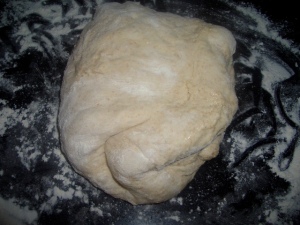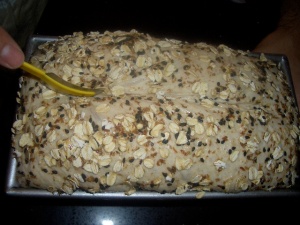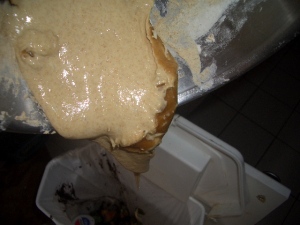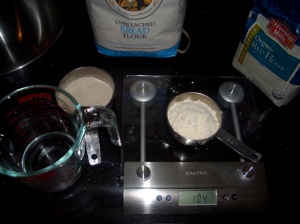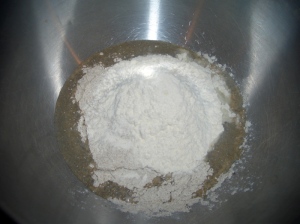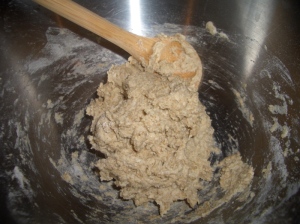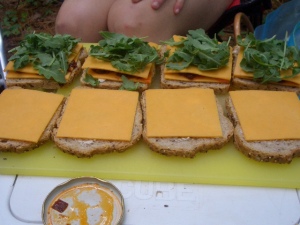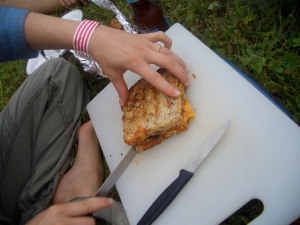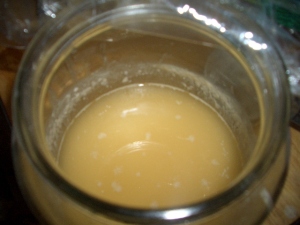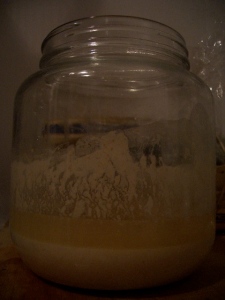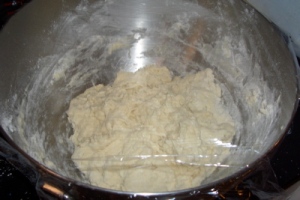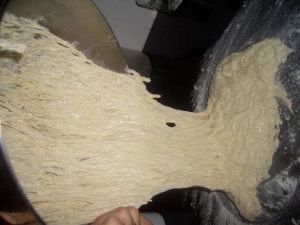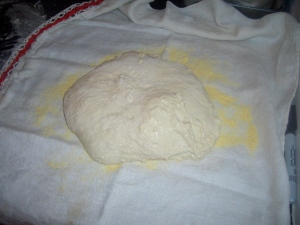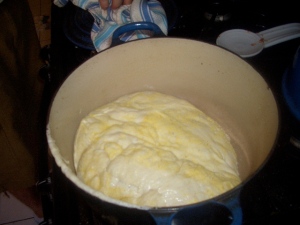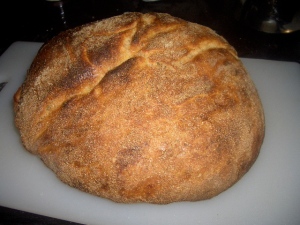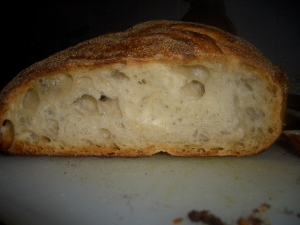Making pizza from scratch may seem intimidating, but its really very easy, and a lot of fun too. You just need to plan ahead a bit so you have enough time for the dough to rise. It also helps to have a pizza peel and a baking stone. The peel will allow you to make your dough nice and thin, while still being able to slide it into the oven. As far as toppings go, the sky is the limit. I LOVE artichokes, so I went with canned artichokes, grilled onions, anchovies, mozzarella cheese and tomato sauce.
Pizza Sauce:
- 32 ounces of canned chopped tomatoes
- 1 can of tomato paste (make sure it doesn’t have any high fructose corn syrup!)
- Water
- 1 small white onion, minced
- 2 cloves of garlic, minced
- 1 handful of parsley, chopped (you can also use oregano or thyme)
- Salt & pepper
- 1 Tbsp olive oil
Saute the onion in the olive oil on medium high until the onion is translucent, about 3-4 minutes. Add the garlic and saute for a couple of minutes, then add the tomatoes, tomato paste, a small can’s worth of water, and salt and pepper. Simmer for 15-20 minutes, and add the fresh herbs. That’s it. (Sauce courtesy of the Honkers)
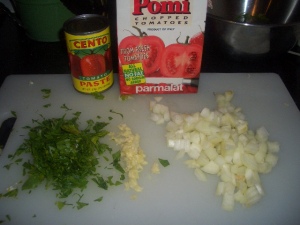
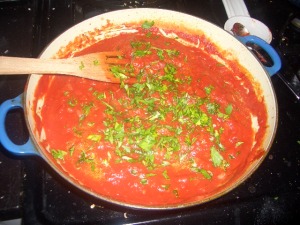
Pizza Dough:
- 2 Cups Bread Flour
- 1 Cup Whole-Wheat Flour
- 2 tsp Kosher Salt
- 2 tsp active yeast
- 2 Tbsp Extra Virgin Olive Oil
Mix the dry ingredients (I used the food processor with the normal blade attachment), then, with the food processor running, add the olive oil and about 1.5 Cups of water through the drizzle hole. Add just enough water so the dough forms a ball, and it is still sticky to the touch.


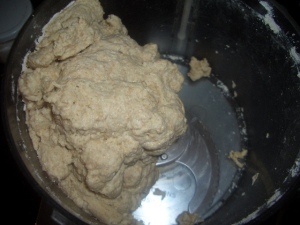
Next, work the dough for a few seconds on a floured surface, kneading, until it is smooth. Form it into a ball and place it in an oiled bowl, covered with plastic wrap, and let it rise for 2-3 hours. It should double in size.
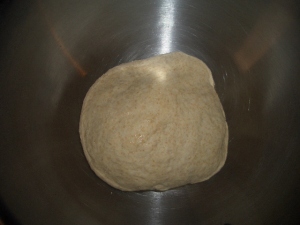
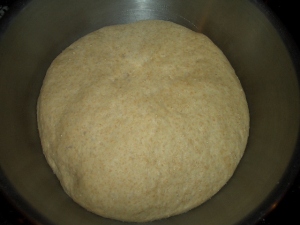
Next, turn the dough out onto a floured surface and knead it for 20-30 seconds. Split the dough into 2 with a dough scraper, and let it rest for about 20 minutes on the counter covered with plastic wrap.
I actually wrapped one of the balls in plastic wrap and put it in a ziplock freezer bag, labeled it, and put it in the freezer for another pizza day within the next month.


Now is a good time to preheat the oven to 500 degrees.
After 20 minutes, I dusted the pizza peel with cornmeal, and then flattened the dough on the pizza peel, and started rolling it out until it was very thin. You can pull it with the back of your fists like you see the pros do, but you can also use a rolling pin. If it gets too thin and tears, just patch the tear with a piece of dough from a thicker spot, no biggie.

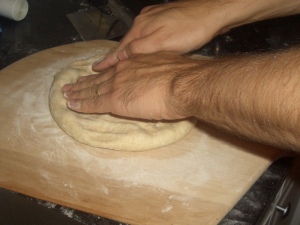

Once the dough was about the size of the pizza peel, I thickened up the crust a bit by pinching, and added the sauce (see recipe above) about 2 ladels worth, just a thin covering.

Followed by the toppings:

First the pre-shredded mozzarella cheese, until the entire pie was generously covered:

Next the artichokes, anchovies (omit to keep it veg), and the grilled onions:

When adding the toppings, picture each slice, and make sure you spread the toppings around so each slice will get a nice mix.
Slide it into the oven:

18 Minutes later:




